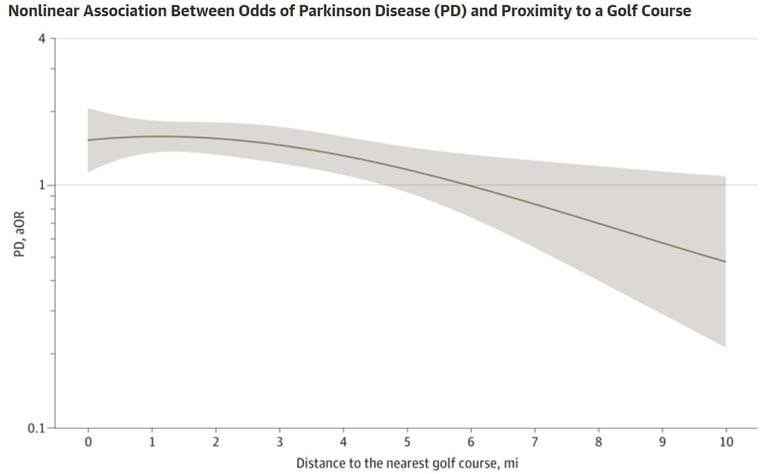Golf Courses: When Green Lawns Become a Threat to Health
2 min read


What appears at first glance to be a picture of well-kept serenity has a darker side: golf courses are sprayed with toxic chemicals on a large scale – with consequences that reach far beyond the fairway.
Parkinson’s Risk Significantly Higher Near Golf Courses
A recent study from the USA (May, 2025) published in JAMA Network Open examined the link between people's place of residence and their risk of developing Parkinson’s disease – and the results are alarming:
People living less than one kilometer from a golf course had more than double the risk of developing Parkinson’s compared to those living further away.
Even within a three-kilometer radius, the risk remained significantly elevated.
Pesticides Don’t Stay on the Golf Lawn
The reason? Golf courses are among the most intensively treated green spaces in the U.S., often using much higher volumes of pesticides than agriculture.
But these chemicals don’t stay where they’re applied. They end up:
in groundwater and household wells
in the air, drifting into surrounding neighborhoods
in dust and rain, reaching gardens, playgrounds, and animal enclosures
The exposure is especially high in areas with permeable soil or shallow groundwater.
What Kind of Chemicals Are We Talking About?
Commonly used substances include:
Chlorpyrifos – an insecticide linked to neurological damage
Maneb – a fungicide discussed as a potential trigger for Parkinson’s
Other organophosphates and carbamates – known to affect the nervous system
Many of these chemicals have long been banned in the EU – but are still commonly used on U.S. golf courses.
Conclusion: Time to Rethink
Golf courses aren’t an isolated case – they represent a broader system that relies on chemical control instead of biological diversity.
Rather than continuing to depend on aggressive pesticides, we should start looking for sustainable, organic alternatives – for the sake of both human health and the environment.
Source: Proximity to Golf Courses and Risk of Parkinson Disease; doi:10.1001/jamanetworkopen.2025.9198


Innovation & Technology
Probiotic soil activators for sustainable agriculture.
Contact
Newsletter
office@solvaterra.com
© 2025. All rights reserved.
